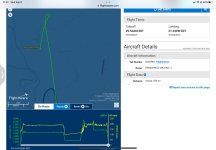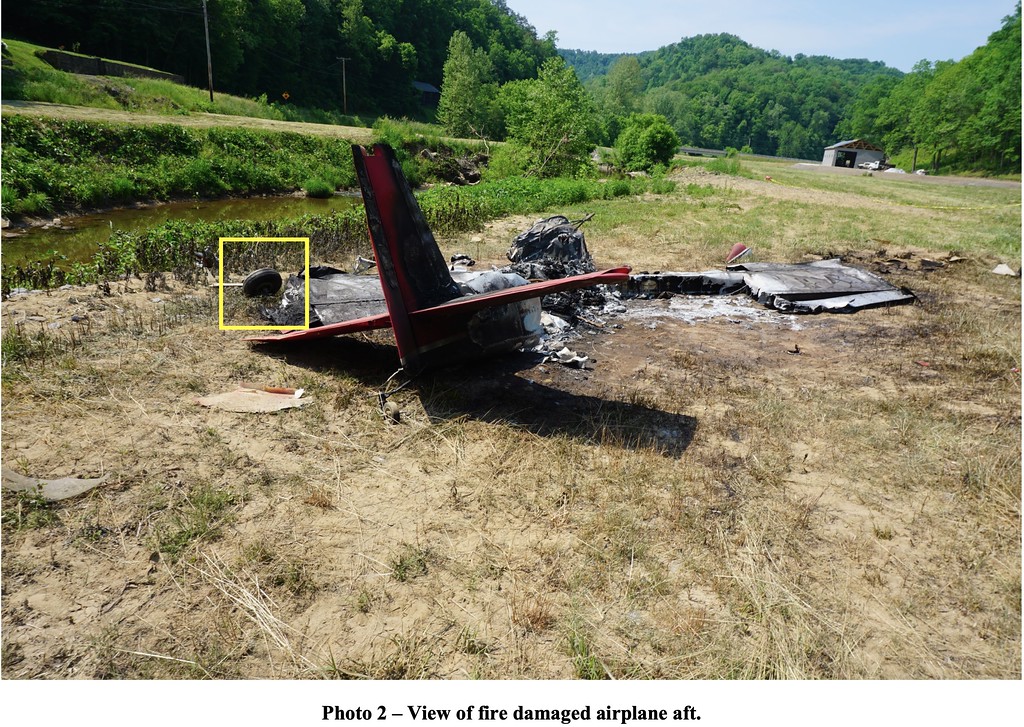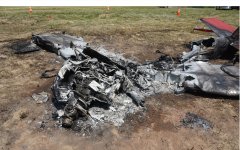Sam Buchanan
been here awhile
Location: Van Cleve, Kentucky Accident Number: ERA21FA229
Date & Time: May 24, 2021, 13:30 Local Registration: N284RM
Aircraft: Munson Roger J RV-8 Aircraft Damage: Destroyed
Defining Event: Loss of engine power (total) Injuries: 1 Fatal
Flight Conducted Under: Part 91: General aviation - Personal
Analysis: During a cross-country flight at cruise altitude, the pilot reported a loss of engine oil pressure and loss of engine power to air traffic control and subsequently performed a forced landing to a field. The airplane impacted the ground and the wreckage was partially consumed by a post impact fire.
Examination of the wreckage revealed oil staining on a portion of the horizontal stabilizer and broken pieces of the windscreen that were found at the site. Examination of the engine revealed that with the exception of the oil sump, which had been partially consumed by the postimpact fire, the crankcase, cylinders were intact, and continuity of the crankshaft and valvetrain were confirmed. The examination also found that an oil line connecting the engine to an aftermarket oil valve had separated, though it could not be determined if the separation occurred prior to, or as a result of the airplane’s impact with the ground. Overall, the engine did not display signatures consistent with a catastrophic loss of engine power and accompanying breach of the engine crankcase. Given the pilot’s report of a loss of oil pressure (and loss of engine power), and the oil staining observed on the wreckage, it is likely that such a failure was imminent. Given the extent of the fire damage to the engine, the reason for the loss of oil pressure could not be determined.
A review of the pilot’s pathological information revealed the presence of ethanol, which was most likely from postmortem production rather than ingestion. Therefore, the presence of ethanol did not contribute to the circumstances of the accident.
Probable Cause and Findings: The National Transportation Safety Board determines the probable cause(s) of this accident to be -- A loss of engine power due to loss of engine oil pressure.
[Note: Links in a later post to this thread to the entire report package]
Date & Time: May 24, 2021, 13:30 Local Registration: N284RM
Aircraft: Munson Roger J RV-8 Aircraft Damage: Destroyed
Defining Event: Loss of engine power (total) Injuries: 1 Fatal
Flight Conducted Under: Part 91: General aviation - Personal
Analysis: During a cross-country flight at cruise altitude, the pilot reported a loss of engine oil pressure and loss of engine power to air traffic control and subsequently performed a forced landing to a field. The airplane impacted the ground and the wreckage was partially consumed by a post impact fire.
Examination of the wreckage revealed oil staining on a portion of the horizontal stabilizer and broken pieces of the windscreen that were found at the site. Examination of the engine revealed that with the exception of the oil sump, which had been partially consumed by the postimpact fire, the crankcase, cylinders were intact, and continuity of the crankshaft and valvetrain were confirmed. The examination also found that an oil line connecting the engine to an aftermarket oil valve had separated, though it could not be determined if the separation occurred prior to, or as a result of the airplane’s impact with the ground. Overall, the engine did not display signatures consistent with a catastrophic loss of engine power and accompanying breach of the engine crankcase. Given the pilot’s report of a loss of oil pressure (and loss of engine power), and the oil staining observed on the wreckage, it is likely that such a failure was imminent. Given the extent of the fire damage to the engine, the reason for the loss of oil pressure could not be determined.
A review of the pilot’s pathological information revealed the presence of ethanol, which was most likely from postmortem production rather than ingestion. Therefore, the presence of ethanol did not contribute to the circumstances of the accident.
Probable Cause and Findings: The National Transportation Safety Board determines the probable cause(s) of this accident to be -- A loss of engine power due to loss of engine oil pressure.
[Note: Links in a later post to this thread to the entire report package]
Last edited:







